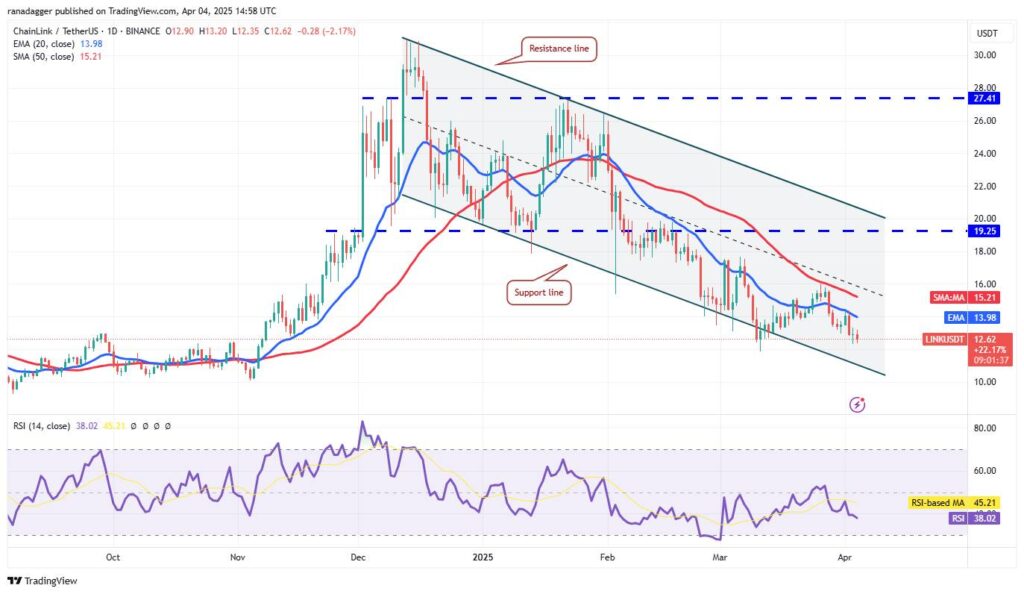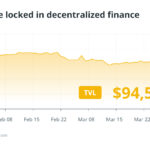The cryptocurrency landscape is buzzing with activity as Bitcoin (BTC) has managed to maintain its price above the significant $80,000 mark, despite recent fluctuations in the U.S. stock market. Following U.S. President Donald Trump’s announcement of reciprocal tariffs on various countries, market participants have been on edge. This anxiety was compounded by China’s retaliatory tariffs set to take effect on imports from the U.S., stirring concerns about the impact on risky assets, including cryptos.
The uncertainty brought on by these tariffs has led some, like BitMEX co-founder Arthur Hayes, to argue that such measures could actually boost Bitcoin and gold in the mid-term, contrasting with the more cautious views of others in the market.
As analysts navigate this volatile terrain, many are keenly observing key price levels for Bitcoin. Noteworthy insights suggest that if Bitcoin can break and hold above $91,000, optimism may prevail. Conversely, a drop below the $80,000 support could lead to significant declines, with predictions of possible lows around $71,000.
Meanwhile, the altcoin sector is also under scrutiny. For instance, Ether (ETH) faces its own challenges, trapped between support at $1,754 and a resistance at $1,928. The performance of other major cryptocurrencies like XRP, BNB, Solana, and Dogecoin remains closely tied to these broader market movements, highlighting the interconnectedness of digital assets in the current economic climate.
With the stakes high, traders and investors alike are left to wonder: can Bitcoin resiliently outperform in this tumultuous market, or will altcoins succumb under pressure?
Bitcoin Price Stability Amid Market Volatility
The recent behavior of Bitcoin and other cryptocurrencies is influenced by various macroeconomic factors and technical analysis. Here are the key points to consider:
- Bitcoin’s Resilience
- Bitcoin (BTC) has maintained its price above $80,000 despite volatility in US stock markets.
- A failure by bears to capitalize on the price drop indicates strong buying support from investors.
- Impact of Tariffs on Markets
- The announcement of reciprocal tariffs by the US and China’s subsequent retaliatory tariffs is shaking risky assets, including cryptocurrencies.
- Market analysts suggest that these tariffs might have long-term positive effects on Bitcoin and gold.
- Price Resistance and Support Levels
- Key resistance for Bitcoin is at $88,500; a break above this could signal bullish trends.
- Support is strong at $80,000, but a drop below this could lead to further declines to $71,000 or lower.
- Market Analyst Perspectives
- Experts have differing opinions, with some expressing optimism for Bitcoin to rise while others are cautious about potential tariff impacts.
- Analysts suggest that close monitoring of cryptocurrency trends and market responses to external factors is crucial for investors.
- Technical Indicators for Altcoins
- Ethereum (ETH) and Ripple (XRP) are facing crucial support levels that, if breached, could lead to significant declines in their prices.
- The overall health of the cryptocurrency market may depend on Bitcoin’s performance and the ongoing response to market volatility.
“Every investment carries risk, and it’s essential for readers to conduct thorough research before making financial decisions.”
Market Stability Amidst Tariff Turmoil: Bitcoin’s Resilience and Competitive Landscape
The recent fluctuations in the cryptocurrency market have created a compelling narrative, with Bitcoin (BTC) managing to maintain its standing above the $80,000 mark while traditional US stock markets have faced significant volatility. This situation, triggered by geopolitical tensions and tariff announcements, has sparked diverse reactions from market experts. Some see Bitcoin’s ability to withstand pressure as a boon, while others express skepticism about the potential fallout from increasing tariffs.
Competitive Advantages: Bitcoin’s durability in the face of external economic pressures is notable, especially compared to equities that have plunged due to trade disputes. Advocates like BitMEX co-founder Arthur Hayes argue that tariffs could bolster Bitcoin’s appeal as a safe haven, similar to gold. This perspective positions Bitcoin favorably against other assets, suggesting that its unique characteristics continue to attract investors looking for alternatives amidst instability. Moreover, with experts predicting that a breakthrough above $91,000 could signal a bullish trend, many traders are now watching Bitcoin closely for potential upward momentum.
Competitive Disadvantages: However, there are reservations within the market, particularly regarding the looming impact of tariffs. Analysts like Byzantine General caution that the upside potential for Bitcoin and other cryptocurrencies may be constrained if the anticipated retaliatory measures from other nations materialize. This viewpoint introduces an element of uncertainty, emphasizing that while Bitcoin presents a compelling argument for investors, the geopolitical landscape can dramatically influence market behavior.
Target Beneficiaries: Investors focused on long-term growth may find Bitcoin to be increasingly attractive during these tumultuous times, especially as traditional markets face volatility. Traders seeking alternative asset classes might view Bitcoin as a hedge against inflation driven by tariff increases. Conversely, those heavily invested in altcoins might face challenges; market sentiment swinging towards Bitcoin could signal reduced interest in alternative cryptocurrencies, which might lead to greater losses in that segment.
Potential Problems: For new entrants in the crypto space, the complex interplay of tariffs and market stability may prove daunting. Concerns regarding short-term price fluctuations could deter hesitant investors. Furthermore, increased scrutiny from regulatory bodies could complicate trading conditions, adding another layer of risk for those looking to capitalize on cryptocurrency’s volatility.

















